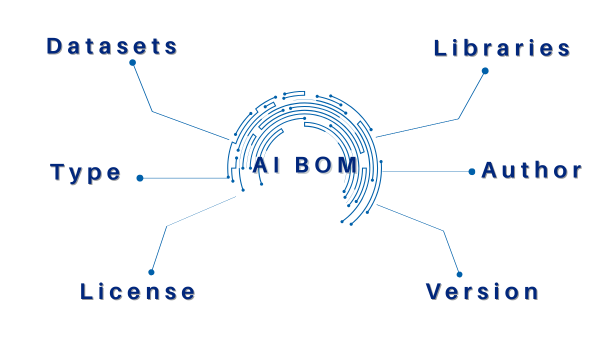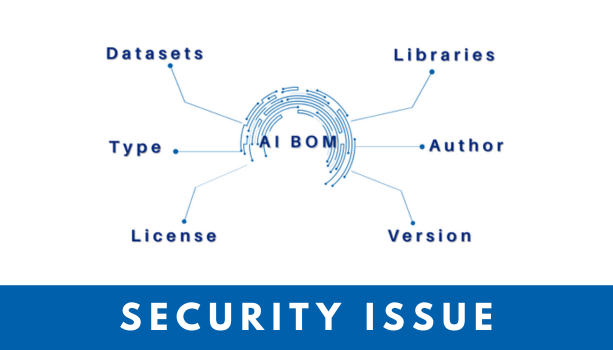[Security Issue] AI BOM: Enhancing Transparency and Trust in the Age of Artificial Intelligence
What is Artificial Intelligence Bill of Materials (AI BOM) and why do we need it?
Let’s start with this question: is your AI service truly secure? Millions of people use platforms like ChatGPT, Gemini, and a growing range of AI applications daily, yet few understand what data these models are trained on, what algorithms power them, or what hidden risks they might carry. Surprisingly, even the companies developing these systems often lack a complete grasp of their inner workings.
As AI becomes more ingrained in our daily lives, governments and corporations worldwide are calling for greater transparency and traceability in AI systems. Much like mandatory ingredient labeling in the food industry, there’s increasing pressure to disclose the components of AI systems. At the center of this movement is the concept of the AI BOM (AIBOM).

What is an AI BOM? The Origin and Concept
Much like the Software Bill of Materials (SBOM), AI BOM systematically documents every component and dependency that makes up an AI system, tailored specifically for AI’s unique challenges.
Modern AI systems have evolved far beyond basic software. Today, they comprise a complex web of data sources, algorithms, and multiple technologies. With the widespread use of open-source AI models and libraries, it has become harder to verify their reliability and safety.
Meanwhile, security threats targeting AI systems are rising. Unique to AI, these threats include toxic data injection, model theft, and adversarial attacks. Addressing these risks requires a structured approach. Regulations are also tightening globally—since 2024, the U.S. has ramped up executive orders and regulatory oversight, while Europe’s AI Act mandates transparency for high-risk AI systems. South Korea has also launched a national roadmap to update its legal framework for the AI era.
Against this backdrop, the AI Bill of Materials emerged.

What are Key Advantages of AI BOM?
AI BOM delivers two vital benefits: transparency and traceability. By clearly documenting the elements that make up an AI system, it becomes easier to understand how the system operates and identify the root causes of issues such as bias or malfunction.
In risk management, AI BOM proves invaluable. With detailed insights into components, organizations can identify and mitigate potential risks in advance—such as biased training data, outdated libraries with security vulnerabilities, or unstable external APIs. This is especially critical in high-risk sectors like finance, healthcare, and autonomous driving.
AI BOM also strengthens regulatory compliance. In the face of tightening AI regulations, companies can more accurately report how they structure and operate their systems, reducing the risk of non-compliance and lowering compliance costs. It also supports thorough documentation for internal and external audits.
From a supply chain security perspective, it allows organizations to verify the source and reliability of third-party components, reducing vulnerabilities. This is particularly useful when using open-source models and libraries, enabling proactive safety validation and rapid incident response. Additionally, AI BOM supports responsible corporate governance by ensuring consistent lifecycle management and transparent decision-making, boosting stakeholder trust.
Global Adoption and Future Outlook of AI BOM
In the United States, AI BOM adoption is accelerating in both government and military sectors. The U.S. military is evaluating it to reduce the risks associated with AI deployment, while the National Institute of Standards and Technology (NIST) is researching its role within the AI security ecosystem. Tech giants in the private sector are also exploring AI BOM to enhance system transparency and safety.
Europe, driven by the AI Act, is witnessing increased documentation requirements for high-risk AI systems. This has prompted a rapid adoption of AI BOM across industries, potentially setting new global standards. In fields like healthcare, finance, and education—all classified as high-risk—AI BOM implementation is becoming essential.
In South Korea, the National AI Committee is spearheading the creation of an AI governance framework. The government actively promotes the adoption of transparency tools like this as part of its strategy for healthy AI industry growth.
Industry-specific adoption is also gaining traction. In finance, AI BOM is being implemented to ensure fairness and transparency. In healthcare, it’s seen as a critical tool for demonstrating the safety and effectiveness of medical AI. Manufacturing sectors are exploring AI BOM to ensure industrial system reliability, while in the automotive sector, it plays a key role in verifying the safety of autonomous driving systems.

Why is AI BOM important? Building Trust in the AI Era
AI BOM is more than a documentation tool—it is becoming a foundational infrastructure for ensuring trust and safety in AI. As technology advances and regulatory environments grow stricter, the importance will only increase. With AI systems now underpinning critical societal infrastructure, AI BOM is essential for transparent and accountable AI operations.
However, widespread adoption faces challenges. Standardization, automation tools, and ecosystem development are still evolving. Overcoming these hurdles will require collaboration among governments, enterprises, and research institutions. Companies must proactively build responsible AI development and governance frameworks to keep pace with this shift.
* Would you like to learn more?
